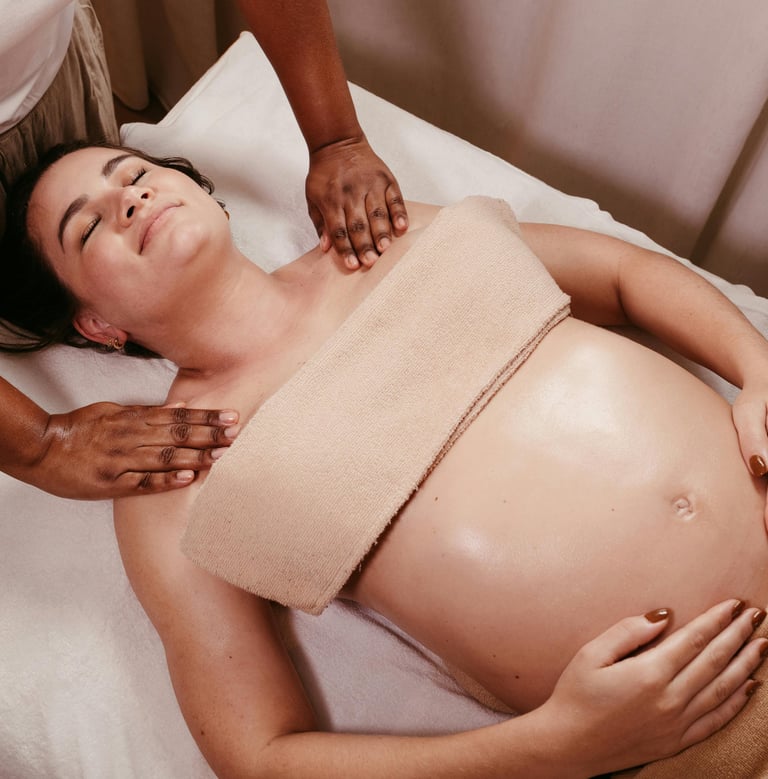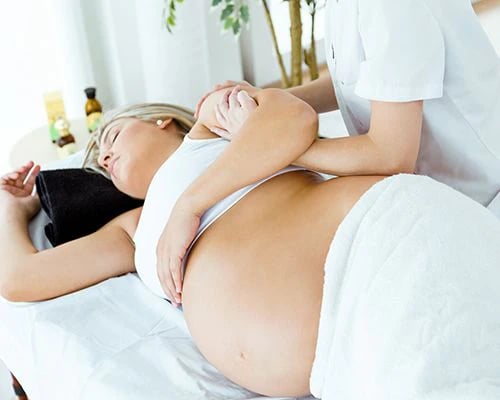Pregnant (Prenatal) Massage
Call-in-Services


Pregnant (Prenatal) Massage Treatment
Prenatal Massage is a specialized therapeutic bodywork tailored to the unique physiological and anatomical changes experienced by expectant mothers. It is a highly respected modality designed to be safe, comfortable, and effective in alleviating the common discomforts associated with pregnancy.
1. Safety and Positioning (The Core Focus)
Safety is the paramount concern. Therapists providing prenatal massage must be specifically trained and certified to understand the contraindications and proper positioning techniques for pregnant clients.
Aspect & Description
Contraindications Prenatal massage is generally recommended only after the first trimester (post-week 12). Specific medical conditions (like preeclampsia or certain high-risk pregnancies) may require a doctor's clearance.
Specialized Positioning Side-Lying Position is mandatory after the first trimester. The client is supported by specialized cushions, wedges, or pillows to ensure the abdomen is supported, and pressure is kept off the lower back and major blood vessels (like the vena cava).
Pressure Avoidance Therapists must avoid deep, sustained pressure on specific areas, particularly the lower legs (to mitigate the risk of dislodging blood clots, a higher risk during pregnancy) and certain acupressure points known to potentially stimulate contractions.
2. Technique and Flow
The technique is gentle, balancing the need for therapeutic relief with the absolute necessity of safety and comfort.
Light to Medium Pressure: The massage is rooted in gentle Swedish-style strokes (long, smooth, flowing) focused on circulation and superficial muscle relaxation. Deep tissue work is generally avoided.
Focus Areas: The massage primarily targets areas under increased strain: the lower back, hips, legs (calves and feet), neck, and shoulders. This helps release tension caused by the shifting center of gravity and postural changes.
Edema Reduction: Gentle effleurage strokes are used to promote lymphatic drainage, which is highly effective in reducing swelling (edema) in the hands, feet, and ankles—a common pregnancy discomfort.
Nourishing Oils: Hypoallergenic, unscented, or lightly scented natural oils (like coconut or grapeseed) are used to nourish stretching skin, often focusing on the abdomen and hips.
3. Primary Benefits
Prenatal massage offers significant physical, emotional, and psychological advantages for the mother-to-be:
Alleviates Lower Back and Hip Pain: Directly addresses the sacroiliac (SI) joint pain and muscle stiffness caused by the hormone relaxin and the increasing weight of the baby.
Reduces Swelling (Edema): Stimulates the circulatory and lymphatic systems, aiding in the efficient removal of waste and fluid retention.
Improves Sleep Quality: Helps soothe the nervous system, making it easier for expectant mothers to find comfort and achieve restorative sleep.
Emotional Support: Offers a dedicated time for the mother to relax and focus on her well-being, reducing stress and anxiety levels.
Prepares Muscles for Labor: Releasing tension in the hip flexors and lower back can help prepare the body for the physical demands of childbirth.


💵Services Price List :
60 Minutes Treatment = Rp 350.000
90 Minutes Treatment = Rp 500.000
Contact
Reach us anytime for your SPA and Massage treatment needs
Phone
©Bliss Home Spa 2025. All rights reserved.
